Sales pages are the digital storefronts that can make or break your online marketing efforts. These pages are designed with a singular focus—to convert visitors into customers by persuading them to take a specific action.
Whether you’re selling a product, offering a service, or promoting an event, a well-crafted sales page is essential for driving conversions and achieving your business goals. In this guide, we will explore the different types of sales pages, their key elements, and strategies for crafting compelling and effective pages.
Introduction to Sales Pages
Sales pages are standalone web pages that focus on a single call to action (CTA). Unlike regular web pages, which may serve multiple purposes, sales pages are designed to guide visitors through a persuasive journey, addressing their needs and objections, and ultimately encouraging them to convert.
The primary goal of a sales page is to maximize conversions by presenting a clear and compelling case for the desired action.
Types of Sales Pages
Sales pages generally fall into two categories: long-form and short-form. Each type has its unique advantages and is suited for different scenarios:
Long-Form Sales Pages: These pages are detailed and narrative-driven, making them ideal for high-ticket items or complex products that require more explanation. Long-form sales pages leverage storytelling to build a connection with the audience, gradually leading them toward the CTA. They provide ample space to address objections, showcase testimonials, and present detailed product information.
Short-Form Sales Pages: Concise and to the point, short-form sales pages are perfect for straightforward offers where the audience is already familiar with the product. They focus on the essentials, making a quick and compelling case for the CTA. Short-form pages are typically used for low-cost or impulse-buy products where the decision-making process is quicker.
Key Elements of a Sales Page
A successful sales page incorporates several critical elements that work together to persuade and convert:
Compelling Headline: The headline is the first thing visitors see, and it should grab their attention immediately. It sets the tone for the rest of the page, promising value and sparking curiosity. A strong headline clearly communicates the main benefit or unique selling proposition (USP) of the product.
Engaging Story or Narrative: Storytelling is a powerful tool in sales pages. It helps connect with the audience on an emotional level, making the product more relatable. By framing the product as a solution to a problem or a path to a desired outcome, the narrative draws readers in and keeps them engaged.
Clear and Persuasive Call to Action (CTA): A CTA should be prominent and compelling, guiding the visitor toward the desired action. It should be specific, action-oriented, and aligned with the page’s overall message. Effective CTAs use strong verbs and create a sense of urgency or exclusivity.
Testimonials and Social Proof: These elements build trust and credibility, showing potential customers that others have benefited from the product. Testimonials, case studies, and endorsements from credible sources can significantly enhance the page’s persuasive power. Including real-life examples and success stories can help alleviate doubts and reinforce the product’s value.
Visual Elements and Design Considerations: Aesthetics play a crucial role in keeping visitors engaged. Use images, videos, and a clean layout to enhance readability and interest. Visual elements should complement the text, reinforcing key messages and guiding the reader’s eye toward the CTA. High-quality visuals can help convey the product’s features and benefits more effectively.
Crafting a Long-Form Sales Page
Long-form sales pages require a strategic approach to storytelling. Start by structuring the narrative to engage readers from the headline through to the CTA.
Use techniques like open loops to maintain interest, and ensure each section logically flows into the next. Testing and optimizing these pages is crucial, as even small changes can significantly impact conversion rates.
Structuring the Narrative: Begin with a strong hook that captures attention and sets up the problem or opportunity. Gradually build the story, introducing the product as the solution and highlighting its unique benefits. Address potential objections and provide proof points to reinforce credibility. Use subheadings, bullet points, and short paragraphs to break up the text and make it more digestible.
Maintaining Reader Interest: Incorporate visuals to illustrate key points and keep the reader engaged. Use persuasive language and rhetorical devices to create a sense of urgency and excitement. Incorporate interactive elements, such as quizzes or calculators, to engage users and provide personalized insights.
Testing and Optimization: Continuously test different elements of the page, such as headlines, CTAs, and design layouts, to identify what resonates best with your audience. Use analytics tools to track performance metrics and gather insights for ongoing optimization. A/B testing can help determine the most effective combinations of elements.
Design and Formatting Tips
When designing a sales page, balance is key. While aesthetics are important, they should not overshadow the page’s primary goal: conversion.
Use formatting tools like all-caps and highlighting sparingly to draw attention to key points without overwhelming the reader. A minimalist design helps reduce distractions, keeping the focus on the content.
Balancing Aesthetics with Functionality: The design should enhance the user experience, making it easy for visitors to navigate the page and find the information they need. Ensure that the layout is responsive and optimized for different devices, particularly mobile. Use a consistent color scheme and typography to create a cohesive look.
Effective Use of Formatting Tools: Use bold text, italics, and color to emphasize important information, but avoid overusing these elements, as they can create visual clutter. Ensure that the text is easy to read, with sufficient contrast between the background and font color. Use white space strategically to create a sense of balance and guide the reader’s eye through the page.
Minimalist Design: A clean and uncluttered design helps maintain focus on the content and CTA. Use white space strategically to create a sense of balance and guide the reader’s eye through the page. Limit the use of distracting elements, such as excessive animations or pop-ups, that can detract from the main message.
Common Mistakes to Avoid
Avoid overloading your sales page with information, which can overwhelm visitors.
Ensure your CTA is clear and prominent; a hidden or confusing CTA can lead to missed opportunities. Additionally, with the increasing use of mobile devices, ensure your sales page is optimized for mobile to avoid losing potential customers.
Information Overload: While it’s important to provide enough information to persuade, too much detail can be overwhelming. Focus on the most compelling benefits and use concise language to convey your message. Prioritize the most important information and use subheadings to organize content.
Unclear CTA: The CTA should be easy to find and understand. Use contrasting colors and clear, action-oriented language to make it stand out. Consider using multiple CTAs throughout the page to capture different stages of the buyer’s journey.
Neglecting Mobile Optimization: With more people accessing the internet via mobile devices, it’s essential to ensure your sales page is mobile-friendly. Test the page on different devices and screen sizes to ensure a seamless experience. Use responsive design techniques to ensure that content and visuals adapt to different screen sizes.
Testing and Measuring Success
A/B testing is a valuable tool for optimizing sales pages. Test different headlines, CTAs, and design elements to see what resonates best with your audience.
Track metrics such as conversion rate, bounce rate, and time on page to gauge performance. Use these insights to iterate and refine your sales page continually.
A/B Testing: Create multiple versions of the sales page with variations in key elements, such as headlines, images, and CTAs. Use A/B testing tools to compare performance and identify the most effective combinations. Test one element at a time to isolate its impact on conversions.
Performance Metrics: Monitor key metrics to assess the effectiveness of your sales page. Conversion rate is the most critical metric, but also consider bounce rate, time on page, and user engagement. Use heatmaps and session recordings to gain insights into user behavior and identify areas for improvement.
Iterative Refinement: Use insights from testing and analytics to make data-driven improvements to the sales page. Continuously refine the content, design, and layout to enhance performance and maximize conversions. Regularly review and update the page to ensure it remains relevant and aligned with your marketing goals.
Final Thoughts
Sales pages are a vital component of any digital marketing strategy. By understanding their elements, crafting compelling narratives, and continuously testing and optimizing, you can harness their full potential to drive conversions and achieve your business goals.
Remember, a well-crafted sales page is not static; it’s a dynamic tool that evolves with your audience and market trends.
With the right approach, your sales page can become a powerful asset in your marketing stack, driving growth and success for your business.





